Understanding Taiwan Typhoon Season
Taiwan’s location in the western Pacific Ocean makes it prone to typhoons (taiwan hurricane), especially between June and October. These tropical cyclones form over warm ocean waters and can bring intense rainfall and high winds for taiwan weather. However, with modern forecasting and infrastructure, Taiwan handles these natural events efficiently. Travelers who understand how the taiwan typhoon system works can still enjoy a safe and rewarding visit.
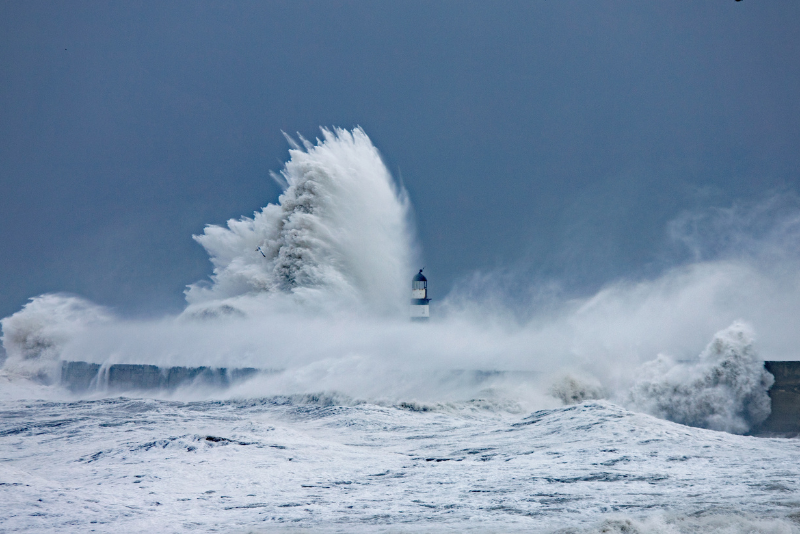
Source: Canva
When Is Typhoon Season in Taiwan?
Typhoons most often strike Taiwan during summer and early autumn, peaking in August and September. There are no typhoons in winter in taiwan. On average, three to five storms impact the island each year, though many pass offshore or weaken before landfall.
- Early Season (June–July): Light activity for taiwan june weather; minimal impact on travel.
- Peak Season (August–September): Highest risk of landfall and travel disruption under taiwan september weather and taiwan weather october.
- Late Season (October): Decreasing storm frequency, improving travel conditions.
How Typhoons Affect Taiwan
Typhoons can cause strong winds exceeding 100 km/h, heavy rainfall, and occasional landslides in mountainous regions. Urban areas like Taipei experience temporary closures of attractions, schools, and transportation services. The good news is that Taiwan’s disaster response system is efficient, ensuring public safety through alerts, evacuation orders, and rapid recovery efforts.
What to Expect During a Typhoon Warning
When the Central Weather Administration (CWA) issues a typhoon warning, local authorities quickly advise residents and tourists. Travelers should:
- Stay indoors and avoid coastal or mountain areas.
- Keep updated via local news, CWA website, or LINE alerts.
- Stock up on essentials like water, snacks, and power banks.
- Wait until officials announce an all‑clear before resuming travel.

Source: Canva
Taiwan Typhoon and Travel Planning
Planning a taiwan itinerary during typhoon season doesn’t mean you should cancel your vacation— it just means you should plan smarter. Many travellers still enjoy Taiwan’s cities, culture, and food during this time with proper preparation and flexibility.
Best Time to Visit Taiwan to Avoid Typhoons
If you want to minimise typhoon risk in autumn in taiwan, consider travelling between November and April, when Taiwan enjoys dry, cool weather. This period is ideal for outdoor adventures such as hiking in Alishan or cycling around Sun Moon Lake. Shoulder months like May and October offer mild weather and fewer crowds, though light rain is possible.
Booking Flexible Accommodation and Transport
Always choose refundable bookings or accommodations with flexible cancellation policies. Airlines operating in Taiwan (such as the major carriers) typically offer free rescheduling for typhoon‑related disruptions. For ground transportation, using private transfer services that can adjust to weather conditions (such as tripool) provides additional peace of mind.
What to Do If Your Travel Plans Are Affected
- Before departure: Monitor forecasts up to three days ahead.
- During your trip: Follow updates from local tourism bureaus.
- If flights or trains are cancelled: Contact service providers early for re‑booking or changing itineraries.
- If stranded: Seek assistance at your hotel or local police station — many speak English and can help you coordinate with embassies if necessary.

Source: Canva
Taiwan Typhoon: Transportation in Typhoon Season
Transportation disruptions are common during taiwan typhoon season, especially in coastal or mountainous areas. Knowing your options in advance helps minimise stress when plans change unexpectedly.
During storm alerts, public transportation may be delayed or suspended. In these cases, a private transfer platform like tripool can be a lifesaver. It offers door‑to‑door rides, flexible scheduling, and professional drivers who track weather and road conditions in real time. Unlike fixed public routes, tripool drivers can adapt to closures or hazards, choosing the safest available roads to keep you moving when others are grounded.
Here’s a quick comparison of available transportation methods during typhoon season:
| Mode of Transport | Operation During Typhoon | Flexibility | Ideal For | Pros | Cons |
|---|---|---|---|---|---|
| Tripool Private Transfer | Often available (drivers adjust routes) | ★★★★★ | Families, small groups, airport transfers | Safe, flexible, English‑friendly | Higher cost than public transit |
| High‑Speed Rail (HSR) | May suspend during strong winds | ★★★☆☆ | Long‑distance travellers | Fast, efficient | Service stops during severe weather |
| Taiwan Railways (TRA) | Frequently delayed or canceled | ★★☆☆☆ | Budget travellers | Scenic routes, wide coverage | Prone to landslides/flooding closures |
| Domestic Flights | Often cancelled early | ★☆☆☆☆ | Intercity/Island travel | Quick on clear days | Cancelled during heavy storms |
| Bus Services | Limited operations in heavy rain | ★★☆☆☆ | City and rural routes | Affordable | May be suspended without notice |
| Car Rental (Self‑Drive) | Risky during storms | ★★☆☆☆ | Experienced drivers | Freedom of route | Dangerous in mountain/road floods |
Air Travel
Major airports (such as Taoyuan International Airport TPE or Kaohsiung International Airport KHH) may suspend operations during severe typhoons. Airlines usually issue advisories 24 hours in advance. If your flight is cancelled, avoid heading to the airport until confirmation of re‑opening. Always allow buffer days in your itinerary.
Train and High‑Speed Rail
Taiwan High‑Speed Rail and Taiwan Railways Administration services closely monitor typhoon warnings. Both may slow down or temporarily stop during heavy rain and strong winds, especially in central and eastern Taiwan. When this happens, tripool becomes an excellent alternative — their drivers can provide safe transfers between cities when train routes are disrupted.
Road and Local Transport
Road travel in Taiwan can be affected by flooding or fallen debris, particularly in the east coast and mountain regions. Before renting a car or planning a road trip, check real‑time updates via the Directorate General of Highways. If roads are risky, using tripool ensures you have a professional driver familiar with local geography and real‑time safety updates.
Indoor Activities During Typhoon Days
When a typhoon hits, outdoor adventures may not be possible — but that doesn’t mean your trip is ruined. Taiwan offers a wide array of indoor attractions suited to stormy days. Here’s a list of enjoyable options to keep you busy, safe, and comfortable while you wait for the storm to pass:
🏛️ Museums & Cultural Centres
- Visit the National Palace Museum in Taipei — an extensive collection of Chinese art housed in a modern, weather‑resistant building.
- Explore the Chiang Kai‑shek Memorial Hall complex, where you can enjoy indoor galleries and a café while storms roll outside.
- In Kaohsiung, the Kaohsiung Museum of Fine Arts provides a calm environment away from outdoor weather.
Further Reading:
Taiwan National Palace Museum Complete Guide | Discover the Palace Museum’s History, Tickets, Transportation, Highlights, and Must-See Exhibits!♨️ Hot Springs & Wellness
- Head to Beitou in Taipei: the hot spring district has indoor spas where you can soak while listening to rain drumming on the roof.
- Consider a hotel with an indoor pool or spa — many luxury hotels in Taiwan offer wellness centres that remain open during typhoon weather.
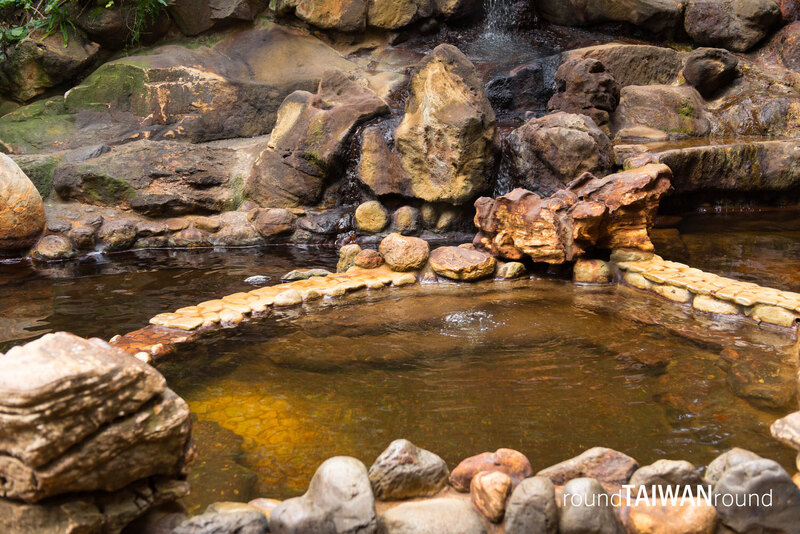
Further Reading:
Beitou Hot Springs No-Risk Recommendations|8 Selected Must-Try Bathhouses + Gourmet Foods + Scenic Spots!🧖🏻 Shopping Malls & Food Halls
- Taiwan’s large malls (such as ATT 4 Fun in Taipei’s Xinyi district) offer hours of browsing, food sampling and entertainment under cover.
- Indoor food halls can remain open even if outdoor stalls close — you’ll still be able to sample local treats like beef noodle soup, bubble tea, and stinky tofu in shelter.

🎥 Cinemas, Escape‑Rooms & Indoor Entertainment
- Book a movie at a multi‑screen cinema.
- Try an indoor escape‑room or VR gaming centre — ideal for groups or families stuck indoors.
- Visit an aquarium (like the Taipei Aquarium, Xpark in Taoyuan or National Museum of Marine Biology & Aquarium in Pingtung) for calm indoor exploration.

Source: Canva
🧑🍳 Local Cuisine & Tea Houses
- Use the time to explore Taiwan’s café culture in Taipei, or find a local tea house like Workshop Tea House in Taichung. Sample oolong and oolong‐milk tea, and watch the storm from a window seat.
- Participate in an indoor cooking class (such as Taipei Xinyi ABC Cooking Studio) — some hotels, malls and culinary schools in Taiwan offer short lessons in making dumplings or traditional Taiwanese dishes.
Further Reading:
Zhongxiao Dunhua Travel Guide: What to Do, Eat, and Experience in Taipei’s Trendiest DistrictRecent and Notable Typhoons in Taiwan
Typhoon Gaemi (July 2024)
- Typhoon Gaemi formed east of the Philippines on July 20 and moved toward eastern Taiwan, making landfall in Yilan on July 25.
- A total of 10 people died, 2 went missing, and 904 were injured, with over 14 000 evacuated.
- The storm caused over 2 000 landslides and flooding in more than 3 500 areas, with parts of Kaohsiung submerged up to 180 cm.
- Nine ships were stranded or sunk, power outages affected 870 000 households, and 509 telecom stations failed.
- Agricultural losses reached NT$3.6 billion, and major routes like the Suhua Highway and TRA North‑Link Line were disrupted.
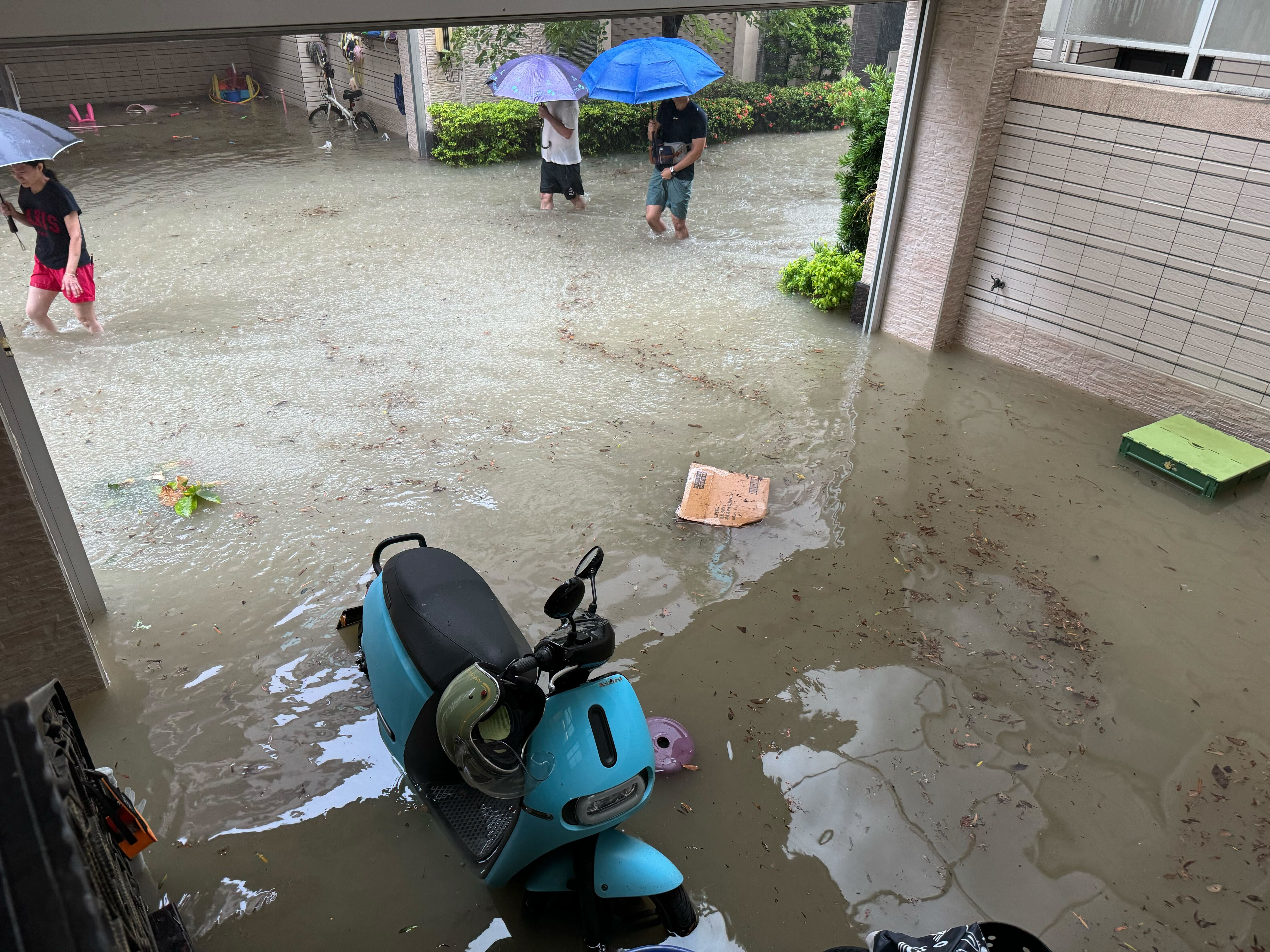
Super Typhoon Ragasa (September 2025)
- Ragasa brought catastrophic rainfall to eastern Taiwan, causing a barrier lake collapse in Hualien.
- The disaster released over 60 million tonnes of water and at least 17 people died.
- Entire villages were temporarily isolated, and thousands of residents were evacuated.
- Ragasa emphasized that secondary disasters like landslides often pose the greatest threat.
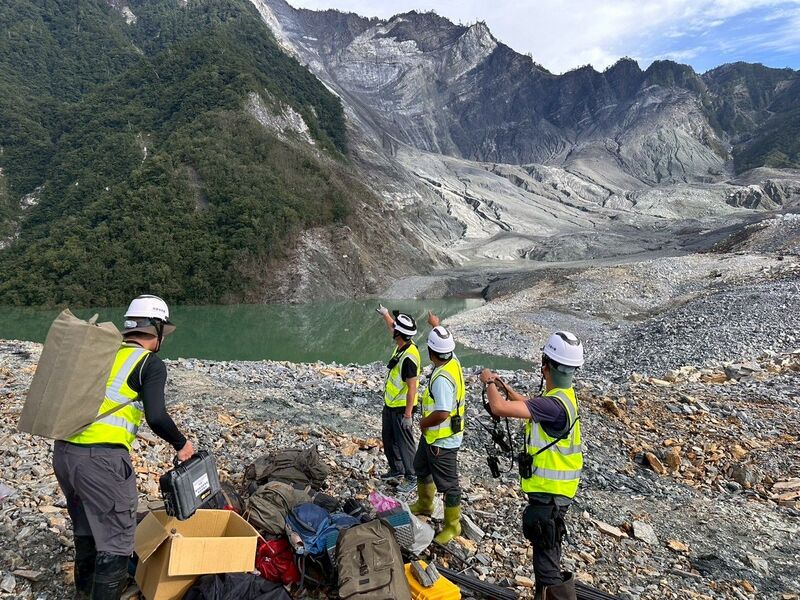
Source: Forestry and Nature Conservation Agency, Ministry of Agriculture
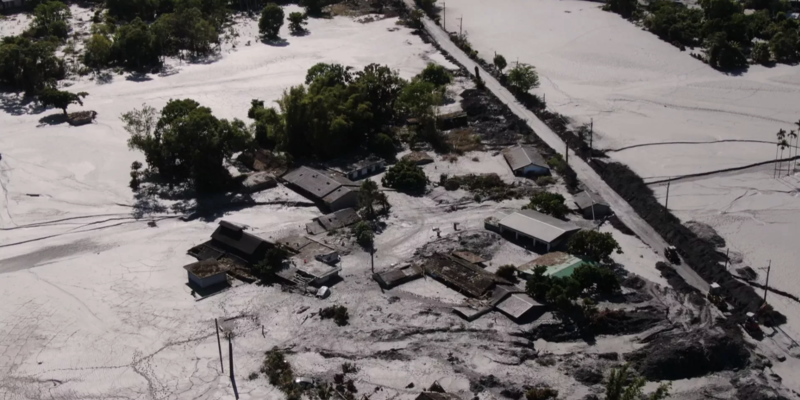
Source: PTS News
Safety Tips for Taiwan Typhoon Travelers
Essential Items to Pack
- Lightweight raincoat or poncho
- Waterproof shoes
- Portable power bank
- Emergency contact list
- A taiwan map
- Refillable water bottle and snacks
- Travel insurance covering weather‑related delays
Staying Informed
Here are some resources for travelers to stay alert when visiting during typhoon season:
🌀 Central Weather Administration (CWA, Taiwan)
- What it offers:
- Real‑time typhoon track maps, warnings, and rainfall radar.
- Updates in English.
- Marine warnings and forecast animations.
- Tip: Check the “Typhoon Information” or “Weather Warnings” section during summer.
📱 Taiwan Typhoon and Flood Research Institute (TTFRI) App
- App name: Typhoon Alert Taiwan (available on iOS and Android)
- What it does:
- Push notifications for typhoon alerts and heavy rain.
- Uses official data from CWA.
- Available in English.
🚒 National Fire Agency (Disaster Prevention Info)
- What it offers:
- Emergency guidelines for typhoons, earthquakes, and floods.
- Shelter information and disaster prevention tips.
🌏 Social Media & Local Alerts
- Facebook: “Taiwan News” and “Focus Taiwan (CNA English News)” pages post frequent typhoon alerts and taiwan weather today.
- LINE app: Taiwan’s main messaging app — many counties offer official LINE alert accounts (some with English).
Post‑Typhoon Travel
After a typhoon, the skies often clear dramatically, revealing crisp mountain views and clean air. Some scenic spots—like Taroko Gorge or Kenting National Park—may temporarily close for inspections but typically reopen within days. Always check with local tourism centres before heading out.
RTR Editor’s Note – Experiencing Taiwan Typhoon Season with Round Taiwan Round
Taiwan seasons bring distinct beauty year-round. As the Round Taiwan Round (RTR) editorial team, we’ve witnessed countless typhoon seasons over the years. While storms can be intimidating, they are also part of Taiwan’s natural rhythm — shaping its lush landscapes and vibrant culture. Typhoons bring not just rain and wind, but also renewal, cooling the summer heat and refreshing Taiwan’s forests and rivers.
During our travels, we’ve been caught in typhoons from Hualien to Taitung, yet we’ve learned valuable lessons from each experience. Locals take typhoons seriously but rarely panic. You’ll see shop owners taping windows, families sharing food, and hotels offering extra supplies to guests. There’s a quiet resilience in taiwan culture that comforts travelers during uncertain weather.
Our advice? Don’t let typhoon season deter you from visiting. Instead, treat it as an opportunity to experience Taiwan’s adaptability and kindness. Stay flexible—plan indoor activities such as visiting Taipei’s National Palace Museum, relaxing in Beitou hot springs, or sampling local food at Din Tai Fung.
At RTR, we also recommend tripool as a reliable partner for stress‑free transport during unpredictable weather. With professional drivers, flexible scheduling, and safe route monitoring, it’s one of the best options when flights or trains are delayed.
When the storm clears, you’ll often find Taiwan at its most beautiful. The air feels cleaner, waterfalls flow stronger, and the countryside glows under renewed sunlight. Visiting Taiwan during typhoon season is not without its challenges—but with preparation, patience, and a bit of local spirit, it can become one of your most memorable travel experiences.
At Round Taiwan Round (RTR), we believe that every storm passes — and what remains is Taiwan’s warmth, resilience, and breathtaking scenery, waiting to welcome you again.

Source: Canva
FAQs About Taiwan Typhoon Season
Q: When is typhoon season in Taiwan?
June to October, peaking between August and September. There are usually no typhoons affect taiwan weather in december and november.
Q: Should I cancel my trip if a typhoon is forecasted?
Not always. Many storms pass offshore; check updates before deciding.
Q: What happens to flights and trains during typhoons?
Airlines and rail may suspend services; always allow buffer days.
Q: What’s the safest transport option during storms?
Private transfers like tripool—flexible, safe, and operated by experienced local drivers.
Q: Are indoor attractions open during typhoons?
Yes—museums, tea houses, malls, hot springs, and cinemas usually stay open.
But pay attention to the latest information since the government might announce typhoon day offs during severe typhoons.
Q: Which regions face the most risk?
Eastern and southern Taiwan experience the heaviest rainfall and landslides.
Q: What should I pack for typhoon season?
Waterproof clothing, power bank, snacks, water, and travel insurance.
Q: Can I drive after a typhoon?
Wait for road clearance notices; floods and landslides can block roads.
Q: What is a barrier lake, and why is it dangerous?
It forms when landslides block rivers—heavy rain can burst it, causing flash floods.
Q: Is Taiwan safe for travelers during typhoon season?
Yes, with caution and preparation. Taiwan’s systems for weather alerts and safety are world‑class.



